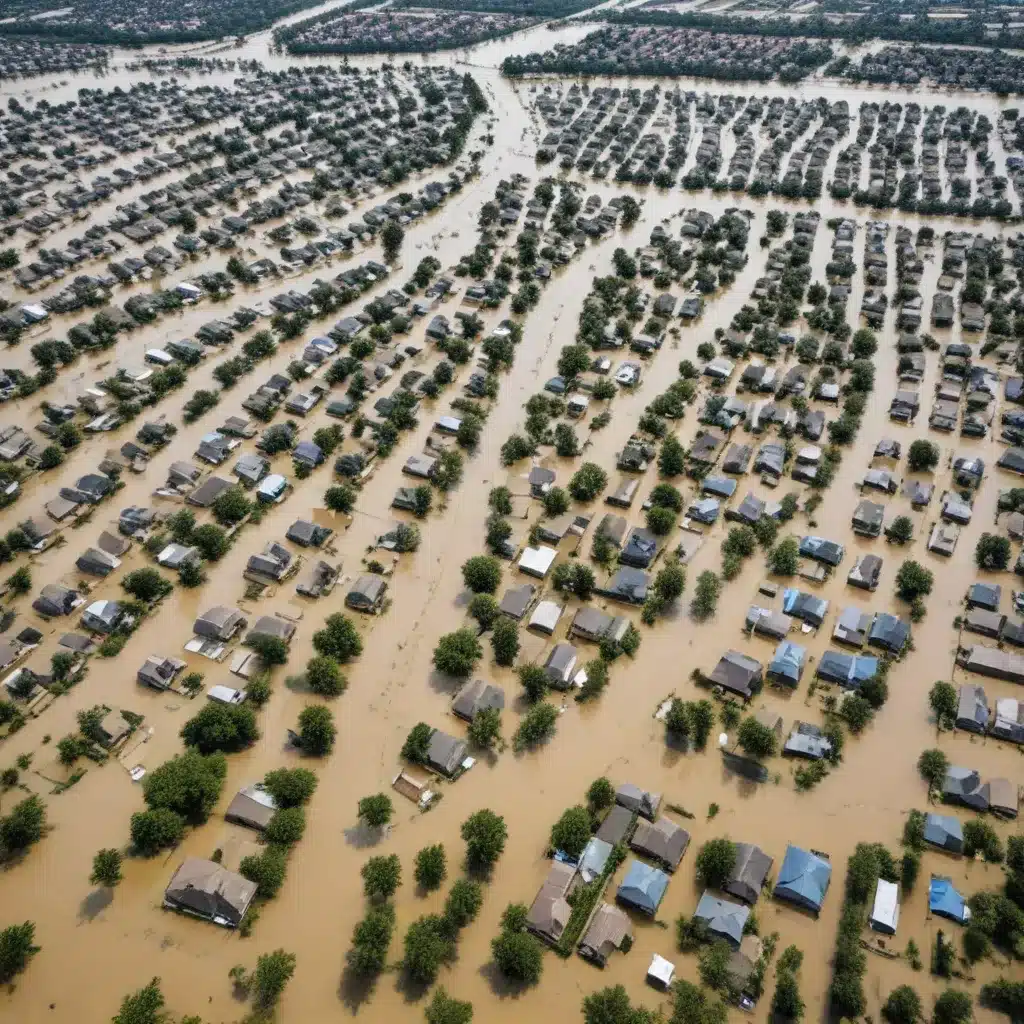
Safeguarding Orlando’s Properties Against the Rising Tide
As an experienced water damage restoration specialist, I’ve seen firsthand the devastating impact that floods and extreme weather events can have on homes and businesses in the Orlando area. Over the past decade, we’ve witnessed a significant increase in the frequency and intensity of these natural disasters, driven by the undeniable forces of climate change. However, I’m here to share that there are proactive measures we can take to bolster our community’s resilience and protect our beloved city from the ravages of rising waters.
Adapting to a Changing Landscape
One of the most critical steps in building flood resilience is understanding the specific risks we face. In recent years, Orlando has experienced a 24% increase in the intensity of rainstorms, coupled with a projected 3.25-foot rise in sea levels by the year 2100. These sobering statistics underscore the urgent need to take action and implement comprehensive strategies to safeguard our homes, businesses, and infrastructure.
As a water damage restoration professional, I’ve seen firsthand the devastating impact that even a single extreme weather event can have on our community. From flash floods that inundate our streets to storm surges that overwhelm our coastal areas, the consequences can be devastating. Businesses shuttered, homes destroyed, and lives disrupted – the toll is both financial and emotional.
Embracing Nature-Based Solutions
However, the news is not all bleak. We have a powerful ally in our fight against the effects of climate change: nature itself. Through the implementation of nature-based solutions, we can harness the natural defenses provided by our local ecosystems to bolster our flood resilience.
One such solution is the use of living shorelines, which leverage the power of native vegetation, oyster reefs, and other natural features to stabilize and protect our coastlines. By working with the environment rather than against it, we can create a first line of defense against rising waters, while also enhancing the health and biodiversity of our coastal habitats.
Moreover, the strategic preservation and restoration of wetlands and mangroves can significantly reduce the risk of inland flooding. These natural sponges have the remarkable ability to absorb and store excess water, acting as a buffer against the impacts of heavy rainfall and storm surges. By prioritizing the protection of these vital ecosystems, we can not only safeguard our properties but also contribute to the overall ecological well-being of our region.
Building Resilient Infrastructure
While nature-based solutions play a crucial role, we must also address the resilience of our built environment. This means rethinking the design and construction of our homes, businesses, and critical infrastructure to withstand the challenges posed by climate change.
For example, elevating buildings and critical infrastructure, such as hospitals and emergency shelters, can significantly reduce their vulnerability to flooding. Additionally, implementing enhanced drainage systems, upgrading stormwater management networks, and reinforcing our transportation networks can all contribute to a more resilient Orlando.
One innovative approach I’ve seen successfully implemented in other flood-prone areas is the use of amphibious construction techniques. By designing structures that can float on the water’s surface during a flood event, we can ensure that our homes and businesses remain operational even when the waters rise.
Empowering the Community
Resilience, however, is not just about physical infrastructure. It’s also about empowering the community to take an active role in preparedness and response. As a water damage restoration specialist, I’ve witnessed the importance of education and awareness in helping homeowners and businesses navigate the complexities of flood risk and recovery.
One initiative that has proven effective in our region is the establishment of local flood risk disclosure programs. By requiring real estate sellers to provide detailed information about a property’s flood history and potential for future flooding, we can empower buyers to make informed decisions and take proactive measures to protect their investments.
Furthermore, I’ve seen the immense value in fostering partnerships between local government, emergency management agencies, and community organizations. By working together, we can develop comprehensive emergency response plans, ensure the availability of critical resources, and provide residents with the knowledge and tools they need to safeguard their homes and businesses.
The Role of Insurance and Funding
Of course, the implementation of these resilience measures requires significant financial resources. This is where the role of insurance and government funding becomes crucial. By advocating for policies that incentivize flood-proofing measures and ensure the availability of affordable flood insurance, we can help create a more resilient and financially secure community.
Additionally, the strategic allocation of state and federal grants, such as the Resilient Florida Grant Program, can provide the necessary funding to undertake large-scale infrastructure projects and community-based initiatives. As a water damage restoration specialist, I’ve seen firsthand the transformative impact that these investments can have on our ability to withstand and recover from extreme weather events.
Conclusion: A Resilient Future for Orlando
In the face of the growing threat posed by climate change, the time for action is now. By embracing nature-based solutions, fortifying our built environment, and empowering our community, we can build a more resilient Orlando that can withstand the challenges of the future.
As a water damage restoration specialist, I am committed to playing my part in this critical endeavor. Through our work, we will continue to support homeowners and businesses in the aftermath of floods and storms, but our ultimate goal is to prevent the devastation before it occurs.
By working together as a community, we can create a future where the specter of climate-driven disasters no longer looms over our beloved city. Let us embrace this challenge with the same spirit of innovation and determination that has long defined Orlando. The path forward may not be easy, but I am confident that, with a shared commitment to resilience, we can safeguard our homes, our businesses, and our way of life for generations to come.

